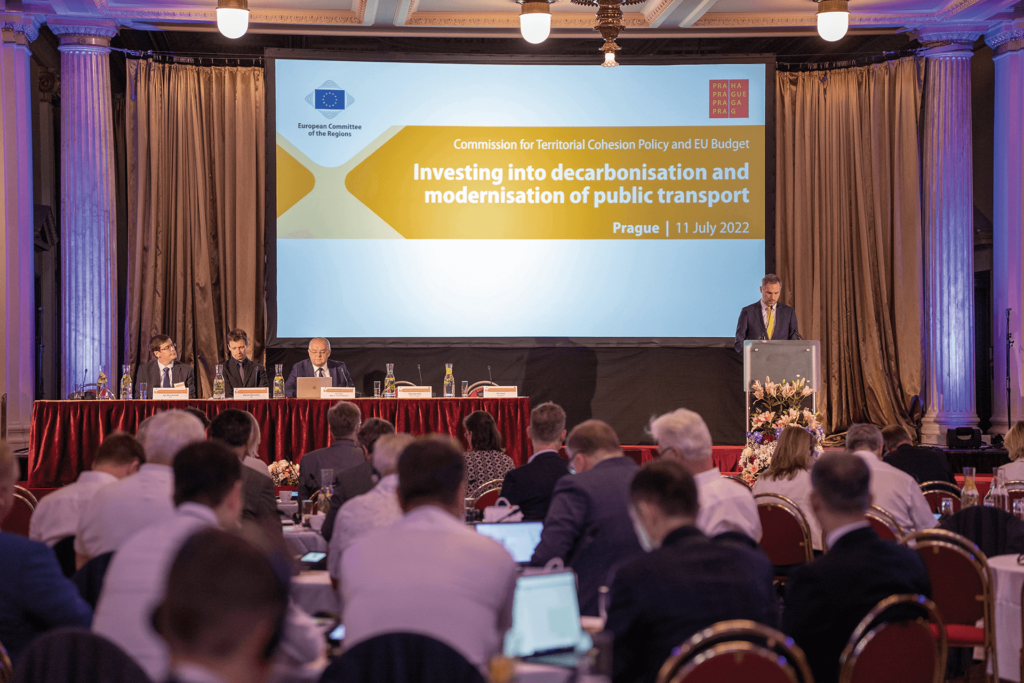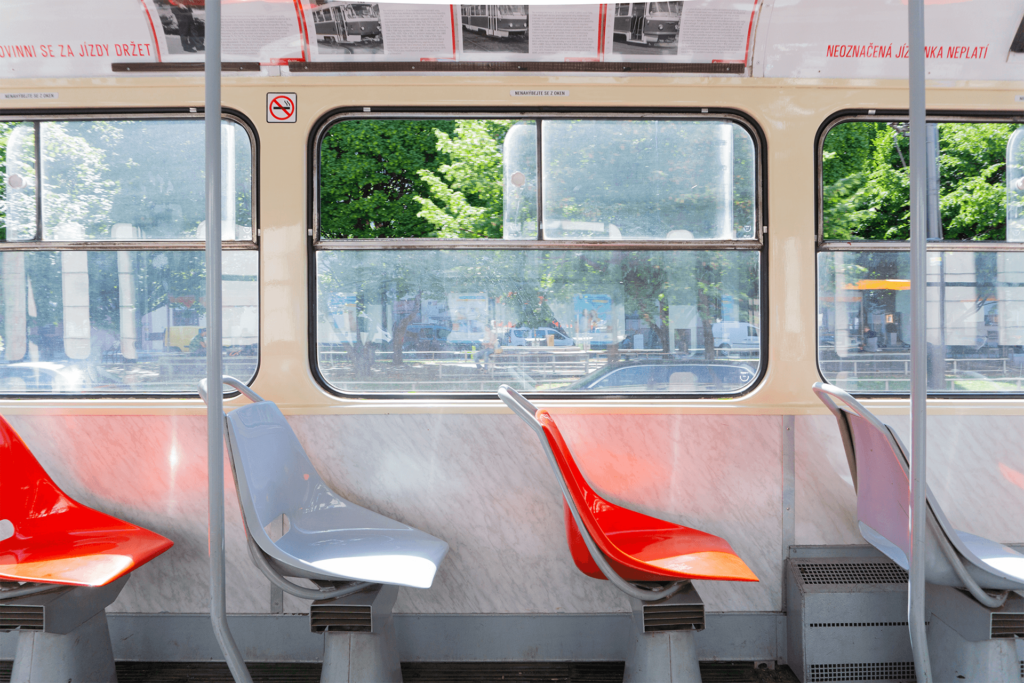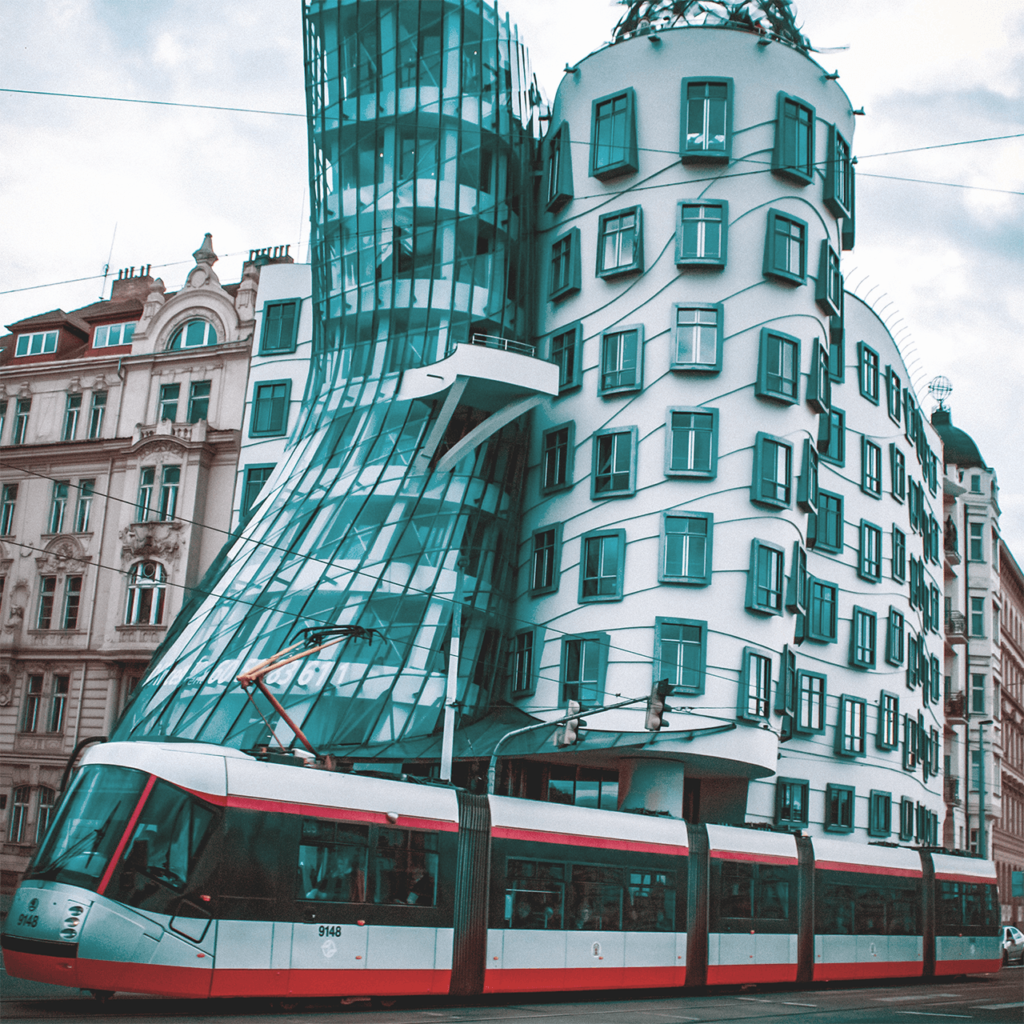Prague’s Carbon Neutral Ambition
The Czech capital aims to reduce its carbon emission by 45% before 2030.
Transport is responsible for almost a quarter of Europe’s greenhouse gas emissions, and it is the main cause of air pollution. In 2016, with the aim of reducing emissions while ensuring the growing mobility demand of citizens and commodities, the European Commission adopted the European Strategy for low-emission mobility. The strategy highlights that the transportation industry has not had the same progressive drop in emissions as other sectors. And, given the impact caused by the war in Ukraine and the overdependence on Russia in the energy sector, this is the moment to speed up this transition towards more self-sufficient transportation.
The strategy underlines three key action priorities that cannot be fulfilled without concurrently addressing the concerns of energy security and affordability:
1
Increasing the efficiency of the transport system by making the most of digital technologies, smart pricing and further encouraging the shift to lower emission transport modes.
2
Speeding up the deployment of low-emission alternative energy for transport, such as advanced biofuels, electricity, hydrogen and renewable synthetic fuels and removing obstacles to the electrification of transport.
3
Moving towards zero-emission vehicles. While further improvements to the internal combustion engine will be needed, Europe needs to accelerate the transition towards low- and zero-emission vehicles.
In 2020, the 27 EU member states obtained roughly 5% of their total energy from renewable sources, with a goal of increasing that percentage to 40% by 2030. After Russia’s invasion of Ukraine, the goal was increased to 45%. Germany, whose primary sources of coal, natural gas, and oil were Russia, brought forward its goal of 100% renewable power by more than a decade, now targeting 2035.
To achieve such an ambitious strategy, cities and local authorities also play a crucial role. Cities account for 23% of all transportation-related greenhouse gas emissions and are home to more than 70% of EU residents. As urban areas have continued to grow, local governments have increasingly had to take on additional duties relating to the delivery of essential services within cities. However, financial and institutional assistance has not always kept pace with this growth in responsibilities. To help the European Union reduce greenhouse gas emissions (by at least 55% by 2030 and by 90% by 2050, as part of the European Green Deal), cities need to be supported in this endeavor.
In July 2022, representatives of the EU regions and cities from the Committee of the Regions (CoR) gathered in Prague in the Commission for Territorial Cohesion Policy and EU Budget (COTER) conference to discuss investments in decarbonization and modernization of public transport in the continent. “One of the greatest environmental challenges is mobility, and sustainable mobility will be shaped by cities,” said Zdeněk Hřib, the mayor of Prague, who hosted the conference.
During the two-day congress, mobility and transportation infrastructure were identified as major areas where collaboration between the European Committee of the Regions and the European Commission should be strengthened. “Policies are created in Brussels but must be implanted at the local and regional level,” said Jose Manuel Ribeiro, mayor of Valongo, Portugal, and member of the Party of European Socialists (PES), reinforcing the idea that multi-level governance is key to advance towards carbon neutrality. Hřib also stated that “EU funding is very important for sustainable mobility, particularly, for local and subnational government to achieve these well-established targets.”

Czech capital to EU example
Last year, the Czech capital – now hosting the presidency of the Council of the European Union (EU) – shared its future climate goals under the 2030 Climate Plan. The city aims to reach climate neutrality by 2050. The plan has four main pillars: sustainable energy and buildings, the circular economy, adaptation measures, and sustainable mobility.
One of the greatest environmental challenges is mobility, and sustainable mobility will be shaped by cities.
Zdeněk Hřib, Mayor of Prague
In an interview with REVOLVE, Hřib indicated that the city council wants Prague to reduce mobility demand and invest in public transportation using EU funding. They intend to expand tram lines, construct a new metro line, and deploy low-emission buses, among other things. These are only a few projects inspired by other European cities like Vienna and Copenhagen.
Prague aims to lower the use of fossil fuels in transport within the territory by at least 25% compared to 2010. To do that, the 2030 Climate Plan encompasses some core priorities:
Priority 1
Increasing the attractiveness, capacity, and effectiveness of public transport.
Despite having one of the world’s best public transport systems, 30% of people prefer to use private vehicles. The construction of new metro line D, the development of the tramway network, and the more intensive involvement of trains in the public transport system will significantly increase capacity, making it a more attractive option.
Priority 2
Increasing the attractiveness, capacity, and effectiveness of non-motorized transport.
Due to lack of infrastructure and public support, cycling makes up only 1% of all transport trips during a standard working day. Prague has a long-term budget dedicated for the development of pedestrian and cycling infrastructure.
Priority 3
Reducing the intensity of inner-city motor vehicle transport.
The intensity of motor vehicle transport increases every year. There are parking fees in selected parts of the city, nevertheless, motorized transport is almost always free of charge within the city territory. Thanks to incentive measures, like an appropriately set charging system, the volume of motor vehicle transport is gradually being reduced.
Priority 4
Exchanging conventional fuel vehicles for low and zero-emission options.
Zero-emission vehicles still form a very small part of the public transport fleet. City organizations have begun to modernize their fleets with battery-powered or hydrogen-powered vehicles. Along with the development of electromobility, a dense network of charging stations will be built in the city.
Priority 5
Supporting the transformation of air transport towards sustainability.
In the last decade, Prague Airport recorded an increase of passengers and currently is preparing further development to strengthen its position as a major transport hub in Central Europe. The target is to see air travel in Prague reduce CO2 emissions by 15% in comparison to 2010. Favorable fees for carriers using aircraft with a low carbon footprint will be offered to encourage travelers to use these services.

Prague’s aspirations go beyond the 2030 Climate Plan. The Czech city has implemented the Smart Prague concept which is inspired by the world renowned Smart Cities concept, the use of the latest technologies for transforming the capital into a better living space. One of the six indicators that comprise Smart Prague is dedicated to Mobility of the Future.
The main mobility challenge identified in Prague has been the growth of the population and its surrounding areas, which has, in turn, increased the demand on transport, thus causing traffic congestion. The aforementioned condition also poses environmental concerns: air pollution, high noise levels, traffic accidents and the degradation of public spaces in the city with low priority for pedestrians and cyclists.
Cities account for 23% of all transportation related greenhouse gas emissions and are home to more than 70% of EU residents.
To overcome such situations, the Smart Prague plan proposes several strategic projects to improve the quality of life of Prague’s inhabitants by utilizing modern technologies and making the city management easier. Some of the projects include: the development of electromobility and infrastructure; shared electromobility; ecological buses; intelligent transport; and self-driving vehicles.
Another major mobility difficulty stated during the conversation with Zdenk Hřib was how to communicate the importance of the mobility shift to people. Hřib stated that the best way to solve it is to invest in public transportation, make it appealing to the public, and deploy smart technology.
Even though every European city faces a variety of different challenges, local and regional authorities have implemented solutions that tackled social, environmental and political challenges at the same time. Mayor Zdenk Hřib highlighted Prague’s primary projects and encouraged conference delegates to tour the city’s main sustainable mobility initiatives, with the goal of inspiring other cities to follow Prague’s lead. Hřib insisted that “the EU funding will help the country boost the sustainability of public transport which will, in turn, reach the European Climate goals.”
